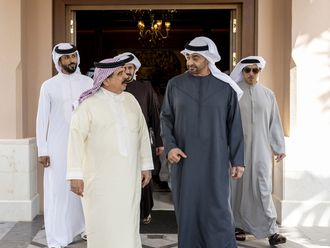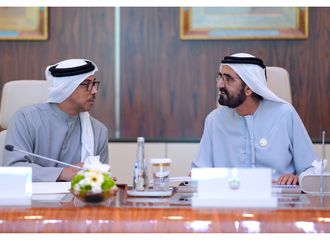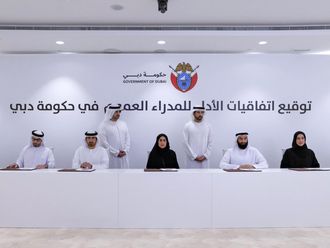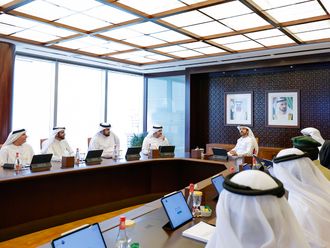Dubai: A new smart e-Gate system, which reads passport information and captures biometric data, including facial recognition in 12 to 14 seconds has been launched at the Dubai International Airport on Wednesday. Initially, it is installed at Terminal 3 arrival and will eventually be installed across all Dubai International’s immigration entry and exit points soon.
The system, equipped with retinal scan using a high-accuracy camera, will eliminate the need for the e-Gate card currently issued by the General Directorate of Residency and Foreigner Affairs (GDRFA).
Shaikh Ahmad Bin Saeed Al Maktoum, President of the Dubai Civil Aviation Authority, Chairman and Chief Executive of The Emirates Group and Chairman of Dubai Airports, has unveiled the new technology, which he described as a “new era in passenger service”.
The new technology paves the way for a faster and more efficient movement of the growing number of passengers into and out of the world’s fourth busiest airport for international passengers.
The system then matches the traveller’s captured biometrics and passport information against existing lists to detect any potential immigration issues. All these procedures will be completed in less than 15 seconds while maintaining a high-level accuracy and security standards.
Holders of modern passports with bar-codes that can be read by the e-reader can use the e-Gate, including children above the age of seven. Passengers who hold passports without e-readable barcodes, can proceed to the existing e-Gates or the conventional immigration counters to complete their entry or exit process.
Major General Mohammad Al Merri, Head of Dubai General Directorate for Residency and Foreigners Affairs said the Smart e-Gate is an ambitious and futuristic project and an important step towards encouraging the culture of e-travel.
“Working in an airport that is considered as one of the fastest growing airports in the world represents a challenge for all of us in facilitating the entry and exit of passengers without affecting security standards,” he said.
“We have succeeded in achieving this thanks to clear vision, team spirit, the use of the state-of-the-art technologies and the great support given by Shaikh Ahmad Bin Saeed, his daily follow up of work in the airport, and his directives to eliminate any obstacles that may hinder the progress in achieving the ultimate goal of making Dubai International the world’s best airport.”
The project was managed by a multi-specialised workgroup, led by Brigadier General Obaid Bin Surour. The team met with representatives of the concerned agencies and departments in the airport to discuss their needs and views, and hence, a plan of action was drawn up for the implementation of the project.
Before rolling the technology out, GDRFA will conduct a two-month trial of the system, during which there will be a daily follow up by the officers of the directorate to assess its performance and operational efficiency.
Lieutenant Colonel Khalid Nasser Abdul Razzaq Al Razzouqi, Assistant Director General of Electronic Services at GDRFA, said: “The new e-Gate will give us high efficiency in handling issues such as huge growth rates in passengers numbers, the use of fake passports and the reduction of time in completing passenger procedures at the counters to 12-14 seconds only, which is a record time.”
Lt. Colonel Khaled explained that a group of officers from the directorate had been trained on the operation of the smart e-Gate. He pointed out that a number of trials were carried out on the different segments of travellers before launching the new smart system.
Lt. Colonel Khaled explained: “This step comes within the framework of the directorate’s strategy to enhance customer loyalty and satisfaction, which at the end of the day will serve our aspirations as the service provider and benefit the public at large. Thanks to the combined efforts of the team and stakeholders, we have made a significant accomplishment in this regard.”












